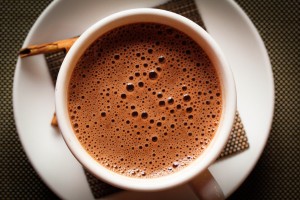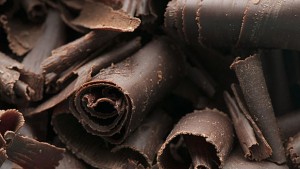
The Simple Joys of Hot Chocolate
America is clearly a nation of chocoholics. Most of our chocolate delivery vehicles are cool or cold. Cakes, candies, and frozen dessert are seen and consumed frequently. These various forms provide an abundance of palate pleasure but offer little to our keenest sense–the olfactory. Hot chocolate excites our sense of smell from across a crowded room. The nose is not only our most potent tasting tool; it is also the most powerful memory trigger.
Hot chocolate, a single sip can bring forth a flood of buoyant memories. The mere mention of the steaming elixir creates mental images of warming yourself near the fire while watching snow fall gently through partially frosted windows. Hot chocolate is the king of comfort foods.
While hot chocolate may not seem to be sophisticated to some or worthy of analysis, it’s instructive to remember that for most of chocolate’s long and celebrated existence, it was consumed exclusively in liquid form. Today, hot chocolate is enjoying a renaissance of sorts, earning a place of prominence in America’s top restaurants and cafés.
Defining Hot Chocolate
Many consumers in the USA incorrectly use the terms hot cocoa and hot chocolate synonymously. Even Wikipedia gets this wrong (who would have imagined it, erroneous information on Wikipedia…) using the names as interchangeable terms.
The quick and easy answer is that hot chocolate is made from solid chocolate that has been cut or shaved into small pieces and carefully melted into milk, cream, or even water. Hot cocoa is made from cocoa powder. Anyone who has had the chance to taste genuine hot chocolate has undoubtedly noticed that it is richer and more dense in flavor and texture than hot cocoa. One is not necessarily better than the other; they are simply different by design.
A Brief History of Hot Chocolate
The cocoa tree is native to tropical South America and Mexico. The Mesoamericans have been consuming chocolate since 1100 BC where it was always enjoyed as a beverage. Both the Aztecs and the Mayans considered chocolate to be a gift from their respective fertility goddess. The first chocolates were a far cry from our contemporary versions being frequently made with roasted cocoa beans, chilies, water, and often a fermented alcohol beverage. The resulting beverage was a drink that was far more savory than sweet and quite potent.
Following his fourth journey to the New World, Columbus had introduced the chocolate drink to King Ferdinand and Queen Isabella, of Spain, in 1502 with less than a favorable reception. Nearly two decades later Cortez, after his introduction to the Aztecs, presented the Spanish royal court with a chocolate drink that incorporated two other recent imports: sugar from the East Indies and vanilla from Mexico. This chocolate drink, more closely resembling modern hot chocolate, was eagerly consumed. The 17th century opened with expanded trade routes from the New World bringing large quantities of cocoa beans to Europe. The century concluded with chocolate being enjoyed throughout Europe and the UK.
Creating the Perfect Hot Chocolate

Hot Chocolate starts with great Chocolate
Making the perfect hot chocolate starts with successful shopping. The base recipe we offer is rather simple with few ingredients so it is essential that every item is well-chosen and are the best items that fit your budget.
We like to use bittersweet chocolate as we are seeking a dark chocolate with a high percentage of cocoa and it is typically sweet enough to make an addition of sugar unnecessary. We like a chocolate with a cocoa content of 60%, or greater. Milk chocolate becomes far too diluted when married with milk or cream for our taste.
A Basic Hot Chocolate Recipe
- 1 quart milk
- 12 to 16 oz. Quality bittersweet chocolate
- A tiny pinch of salt
Bring the milk to a low boil whisking to ensure that it does not scorch. Remove it from heat and add the chocolate whisking in a steady motion to promote melting and to create a smooth mixture. Serve warm.
From this base recipe you can add any number of flavors ranging from spices to fruit purees and coffee. Many people enjoy the simple addition of cinnamon or vanilla but you can get as exotic as you like. Perhaps a bit of heat from ground chilies is your preference. Use you imagination.
Cocktails
Hot chocolate is certainly not confined to the kitchen finding a plethora of complimentary companions waiting at the bar. Of course, cordials offer the quickest route from converting your G-rated hot chocolate to an adult exclusive treat. Fruit flavors such as orange found in Grand Marnier and Cointreau pair beautifully with a dark chocolate base. Chambord, the raspberry liqueur, creates a hot, liquid truffle when added to hot chocolate. Coffee-flavored liqueurs create a stylish mocha cocktail while nut-flavored cordials such as Frangelico and Nocino make an irresistible concoction.
Of course, hot chocolate cocktails are not limited to Liqueurs. Savory spirits such as Cognac, Rum, and Bourbon pair beautifully with hot chocolate. The combinations are limited only by your imagination.
Let hot chocolate unlock your childhood wonder and creativity. It’s fun and rewarding to play with your food.
